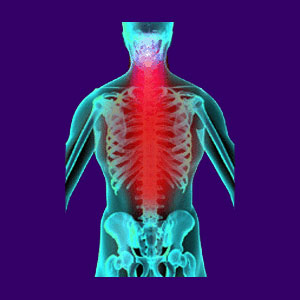
Influenza back pain is a common sign of flu infection. In fact, back pain might be one of the first symptoms experienced when the flu begins. Influenza is a very common ailment that comes in many different severities. The usual cases make people mildly to moderately sick for a few days to a week, while some strains endure longer and cause worse suffering.
The flu is an ailment that preys on the young and the old. It is no surprise that although anyone can acquire the flu, the worst cases are seen in the extreme ends of the age spectrum. Many young children and elderly people are killed by influenza each year.
This dialog focuses attention on the back pain that is commonly associated with the flu. We will examine the types of expressions often experienced, the reason pain exists and what can be done to mitigate pain while the illness lasts.
Influenza Back Pain Symptoms
Back pain is often one of the first symptoms of the flu. Generally, this pain will exist in the lower back over the kidneys, in the flanks over the middle rib cage and/or in the neck. Some patients have generalized dull discomfort, while others might endure focal areas of acute pain. Back pain typically endures throughout the flu infection, with periods of fever intensifying the dorsal pain. Some patients might continue to feel minor back pain even a few days after seemingly completing their influenza recovery.
If complications develop during the flu, such as secondary pneumonia infection or high fever, additional symptoms are likely to be present. In cases of pneumonia, upper back pain is often demonstrated. This pain is usually sharp and might be linked to coughing. In cases of high fever muscular spasms might occur, causing truly terrible suffering when these attacks target the postural muscles.
An overall feeling of soreness is universal with the flu, but the expressions of particular types of back pain are very case-specific occurrences. Some patients will have minor pain, while others will have extreme pain. Different strains of the flu, age and physical condition of the patient and other circumstances all come into play when discussing the symptomatic expressions that are possible.
Causes of Influenza-Related Back Pain
Back pain often occurs in flu patients due to several common causes. First, when infected with the flu, it is common for patients to develop pain all over their skin, with a creepy, achy feeling being almost universally experienced. Next, the lymph nodes and organs are always affected by influenza infection and those located on the dorsal side of the anatomy will often be painful and sensitive to pressure. This explains why so many patients develop focal areas of pain over lymph structures, glands and organs, especially in those tissues that are instrumental to fighting off the systemic infection. Finally, long periods of inactivity and bed rest are commonplace when one is sick with the flu. This can exacerbate stiffness, as well as create pressure-related pain in many of these sensitized dorsal structures, particularly in patients who lie on their backs in bed.
Other symptoms that are sometimes experienced along with the flu might also contribute to back pain. Coughing and sneezing are sometimes seen and both of these can create dorsal pain especially after many episodes of symptomatic activity. Throwing up is another symptom often seen in flu sufferers and the constant wrenching of the gastrointestinal tract can make the lower back, upper back and neck muscles acutely painful. Finally, the diarrhea that sometimes accompanies flu might exacerbate lower back pain in many patients.
Influenza Back Pain Relief
There is no cure for the flu. Even the few anti-viral medications that might be used may only reduce the severity of symptoms and the duration of suffering, although these benefits are not even universally proven to exist. That being said, there are still ways to reduce the severity of back pain that is experienced in conjunction with influenza:
OTC pain relievers can help, but it is wise to use caution with these drugs. Some medications can cause serous health problems and all are dangerous when used in quantities or therapeutic durations beyond the recommended limits.
Avoiding drastic temperature changes can help flu sufferers. Maintaining a constant warm room temperature will help regulate fever and prevent chills that can encourage back spasms.
Although rest is important for sick people, staying in bed on one’s back all day and night is counterproductive and will certainly aggravate dorsal symptoms. Try to sit up or move around gently to improve circulation and speed healing. Also, try to vary reclined positions to include postures, such as the fetal position, which spare the back pressure and therefore reduce pain.
Be sure to stay fully hydrated with water and electrolytes. Dehydration is a contributor to pain and certainly will exacerbate other causes of dorsal discomfort seen during flu episodes.





